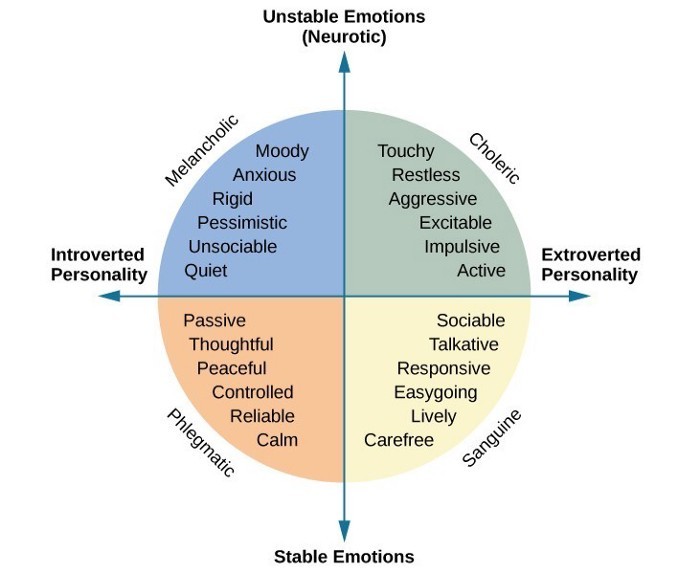Individual differences: ideas from the book ‘The psychology of a language learner’ by Zoltan Dornyei

Successful language acquisition depends on how educators deal with students’ individual differences (ID). Knowing these characteristics might help teachers avoid conflict situations and facilitate learning by modifying their syllabus. There is a great number of studies on personality but how to apply them to language learning?
Zoltan Dornyei, who is a professor of psycholinguistics at the University of Nottingham in the United Kingdom, gathered plenty of theories and evaluated them in his book ‘The psychology of a language learner’. In this article, you will find an overview of some parts of the book.
What conflicts may appear if we ignore ID?
Language teachers and text writers unconsciously design programs for students of their own type. There can be mismatches between student’s learning style and the teacher’s teaching style, between student’s style and the syllabus (for example, the book doesn’t cover the material systematically) or a task etc.
Dornyei points out that in practical research by Oxford (1999) four conflict types were offered:
- students who disliked ambiguity and whose closure needs were ignored,
- introverted students coping with extroverted teachers who ‘entertained’ the class,
- global, intuitive-random students dealing with analytic details provided by the teacher,
- students whose sensory preferences were thwarted.
At the end of the article, we give some advice on how to prevent the conflicts mentioned above.
ID: Personality and temperament
The most popular classifications at the present time are: Eysenck’s model, The Big Five construct and Myers-Briggs Type Indicator (MBTI).
Eysenck’s model contrasts three principal personality factors:
- extraversion (sociable, crave for excitement, like changes, impulsive) with introversion (reserved, quiet, control their emotions, reliable),
- neuroticism (quick-tempered, overly emotional) with emotional stability( calm),
- psychoticism (cruel, a loner, aggressive, troublesome) with tender-mindedness (balanced behaviour).
Eysenck combined the factors to form four types of temperament:

The Big Five construct (OCEAN) is based on Eysenck’s theory and includes:
- Openness to Experience ( imaginative, curious, flexible, creative, original; or conservative, conventional, down-to-earth and practical.
- Conscientiousness (systematic, efficient, organized, reliable, persevering, and self-disciplined; or unreliable, aimless, disorganized, lazy, and weak-willed).
- Extraversion–introversion (sociable, active, assertive, passionate, and talkative; or quiet, reserved, withdrawn, sober).
- Agreeableness ( friendly, good-natured, forgiving, trusting, cooperative; or cold, cynical, rude, critical, suspicious, irritable).
- Neuroticism–Emotional stability: ( worrying, anxious, insecure, moody, and unstable; or calm, relaxed, unemotional, comfortable, content.
Another well-known theory ‘Myers-Briggs Type Indicator’ (MBTI) is based on Carl Jung’s classification.
- Extraversion–Introversion, referring to where people prefer to focus their attention and get their energy from.
- Sensing–Intuition, referring to how people perceive the world and gather information.
- Thinking–Feeling, referring to how people prefer to arrive at conclusions and make decisions.
- Judging–Perceiving, referring to how people prefer to deal with the outer world and take action.
Dornyei states that the most researched personality aspect in language studies has been the extraversion–introversion dimension. It is the factor that is easily noticed even without taking any personality tests.
In the lesson, extraverts are more talkative and make fewer pauses than introverts, while the latter tend to use more formal speech with more careful grammatical constructions. Some psychologists believe that introverts have a greater ability to consolidate learning, they are less distracted and possess better study habits. Neurotic people (higher scores on the scale Neuroticism) tend to achieve less due to the anxiety factor.
Personality tests:
Eysenck personality test online and pdf
ID: Cognitive styles
Dornyei defines cognitive styles as an individual’s preferred and habitual modes of perceiving, remembering, organizing, processing, and representing information. We have already covered the topic of ‘Learning styles and strategies’ and today will add two more theories.
Richard Riding (2002) proposed taxonomy with two style dimensions:
- Wholist–Analytic Style (wholists tend to see a situation as a whole and appreciate the total context, they can also easily lose sight of the details; analytics see a situation as a collection of parts, they can separate out a situation into its parts, which allows them to come quickly to the heart of any problem).
- Verbal–Imagery Style (outgoing and tend to represent information during thinking verbally, prefer a stimulating environment, good at working with verbal information; imagers are better at working with visual or spatial information, they constructs mental pictures when reading or thinking, rather than thinking in words)
One more model of learning has been offered by Peter Skehan (1998):
- analysis-oriented learners prefer organized and rule-based language representations, value accuracy.
- memory-oriented learners associate words or phrases with certain meanings or situations, don’t value form but rather store in mind a wide range of lexical chunks which can be used for communication.
Tests:
Perceptual Learning Style Preference Questionnaire (PLSPQ)
How can teachers take ID into consideration?
Zoltan Dorneyei compiled simple recommendations:
- Have a balanced teaching style that combines multiple learning preferences.
- Students need to take a personality test or learning style questionnaire to identify their own style. Awareness will make lessons more effective.
- Find out your own learning preferences because ‘teachers teach the way they learned best’. Try not to choose your preferred way only.
- Be ‘sensitive to the students’ differential time requirements in coping with certain types of tasks’. It means that students need various amounts of time to reach certain learning goals.
We hope that this overview will help teachers feel more professional while dealing with students.





 Анна Михайлова-Левина
Анна Михайлова-Левина 
 Skyteach
Skyteach 


